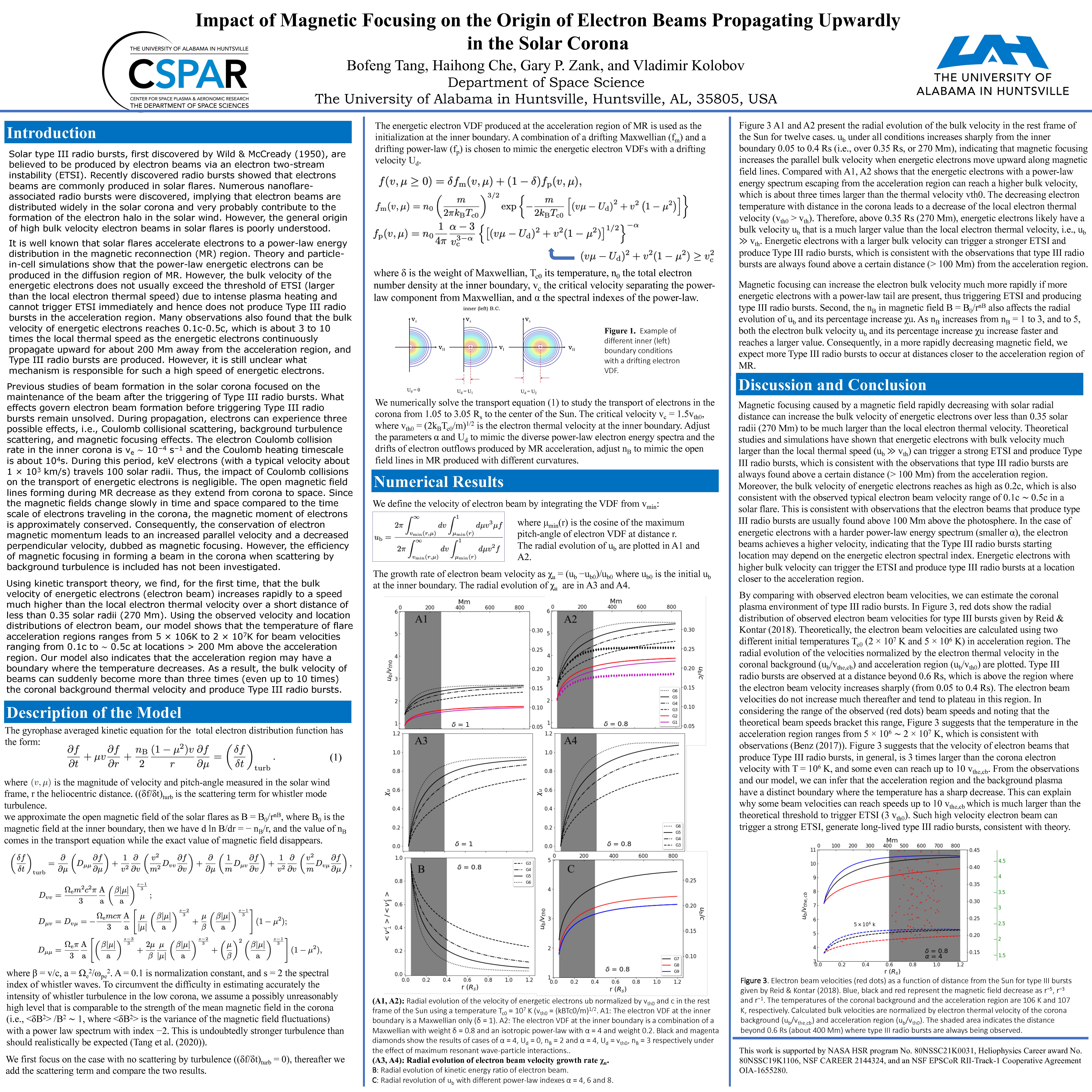Authors: Bofeng Tang (University of Alabama in Huntsville), Haihong Che (University of Alabama in Huntsville), Gary Zank (University of Alabama in Huntsville), Vladimir Kolobov (University of Alabama in Huntsville)
Observations of Type III radio bursts discovered that electron beams with power-law energy spectra are commonly produced in solar flares, the locations of these beams are hundreds of Mm above the particle acceleration region, and their velocities range from 0.1c up to 0.5c. However, the origins of electron beams that trigger radio bursts remain unsolved. Using kinetic transport theory, we find for the first time that magnetic focusing dominates the effect of scattering by background turbulence and is essential in developing electron beams. It sharply increases the bulk velocity of energetic electrons to the observed beam velocity within 0.35 solar radius (270 Mm) as they escape from the acceleration region and propagate upward along the magnetic field lines. A higher bulk velocity is produced if energetic electrons with a harder power-law energy spectrum travel along a faster decreasing magnetic field line. Using the observed velocity and location distributions of electron beams, our model shows that the temperature of flare acceleration regions ranges from 5 MK to 20 MK for beam velocities between 0.1c ∼ 0.5c at a location > 200 Mm above the acceleration region. Our model also indicates that the acceleration region may have a boundary where the temperature abruptly decreases. As a result, the electron bulk velocity can become more than three times (even up to 10 times) the coronal background thermal velocity and produce Type III radio bursts.


